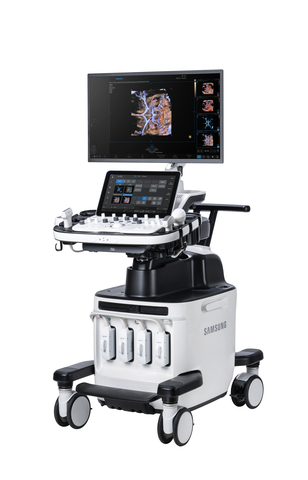About 20% of women experience moderate to severe hot flashes while the other 60% experience hot flashes that are “annoying but not devastating.”
“A lot of people are suffering,” Minkin says. “There’s no question about that.”
Hot flashes, also called vasomotor symptoms, occur when a person feels an intense flush of heat, which quickly goes away, causing them to feel cold.
“The blood vessels in the superficial skin area dilate,” Minkin says. “Blood actually rushes through you, you get hot and then you lose heat … so actually people can get very sweaty and hot and then shiver afterwards.”
Lessening estrogen, which occurs in perimenopause and menopause, seems to be to blame for hot flashes.
“We certainly know that they are associated with the decline in estrogen,” Minkin says. “But the exact mechanism is being worked on right now.”
For many, hot flashes are the first sign that they’re in perimenopause, where women experience symptoms such as hot flashes, vaginal dryness, brain fog, mood changes and sleep disturbances prior to menopause. Menopause is a stage of life that occurs after one does not experience a period for 12 months.
“About 10% of unfortunate women that will happen to have hot flashes that persist for more than 10 years. So they can go on for quite a while,” Minkin says. “The average duration, unfortunately, is about 7.4 years.”
For some, hot flashes lessen over time.
“Women do get the really big blast in the beginning,” Minkin says. “They tend to get better over the course of time.”

Doctors can treat hot flashes with hormonal treatments, what might fall under hormone replacement therapy. Some women are wary of hormonal medications and rely on lifestyle changes, such as wearing cooler clothing, to deal with their hot flashes. Hot flashes can be linked to other cardiovascular problems, which is why women should discuss them and other symptoms with their doctors.
“Women who suffer significant hot flashes may also have some other cardiovascular issues going on,” Minkin says. “They should be talking to their providers about ways to help because there are certain things that can be done.”
Hot flashes fall into a range, which includes:
- Mild — People feel warm but can still function.
- Moderate — People break out in a visible sweat but they can still be active.
- Severe — People who sweat but need to stop doing what they’re doing because the flash is distracting.
“(Women) can get four to 10 hot flashes,” Minkin says. “Women who have seven or more severe hot flashes a day or more than 50 a week (have severe hot flashes).”
Coping with hot flashes
Edwards’ hot flashes last between 30 and 45 seconds and they’re sometimes so intense that she needs to stop what she’s doing to take a breather.
“I have to stop talking,” she says. “I even (excuse) myself if I’m in a meeting just to cool off and come back.”
But her friends, loved ones and coworkers understand she experiences them and supports her. Though, her granddaughters don’t enjoy riding in the front seat of her car because she keeps it too cold.
“They’ll be like, ‘I’m not going to ride in the front seat with your grandma,’” she says. “I’m constantly flipping from the heat to the air because when I get hot, I’m telling you I have to find something to cool me down.”
Edwards hopes that her hot flashes will eventually wane. She wanted to share her story so people experiencing them felt less alone.

“I began to talk about it so that they don’t feel embarrassed when they begin to sense something different going on,” she says. “It’s an opportunity for women to know they’re not alone and this stigma, you don’t have to carry it.”







